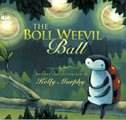
I recently got a project that is about Princess Wencheng. She was a lady of the imperial family in the Tang Dynasty. She became a famous historical figure of China for her marrying the chief of Tubo, a Tibetan King and bringing with her the culture of Han nationality, thus promoting the unity and integration between different ethnic groups. Princess Wencheng is the first princess of peace-making marriage in the Tang Dynasty. It was very fun researching the different costume and custom of this era of Chinese history.

The first great funfact was the importance of color. The garb of many officials in the Tang dynasty had different colors and were used to indicate their official ranks. The robes for the Emperor were yellow, a style that remained the tradition until the Qing dynasty. Generally speaking, the costumes for officials ranked as Level 3 and higher were purple, officials ranked as Level 5 wore red, officials ranked as Levels 6 and 7 wore green, and officials ranked as Levels 8 and 9 wore blue. Why was color such a focus of these costumes? On the surface, ancient people used the positions of king, minister, the nobility, and the characteristic of humility to show the dignity of the different ranks in society. But in fact, in the corresponding dimension of heaven, beings of different colors have fundamental differences—different dimensions, levels, and particles. It's believed that the various colors of the social ranks are the various manifesting forms of the different lives in our universe. Where do all the black loving goths belong nowadays?

After looking at countless images of courtly ladies, I then watched an amazing visual spectacle called "The Curse of The Golden Flower". I was able to see the lavishness of the costume and the intense color palettes that might have existed in the Tang Dynasty. It must be wonderful to have ancestry with such craftsmanship and symbolism.





1 comment:
I love~~~~~ the visual of the movie and your Tang images, too.
JC^^
Post a Comment